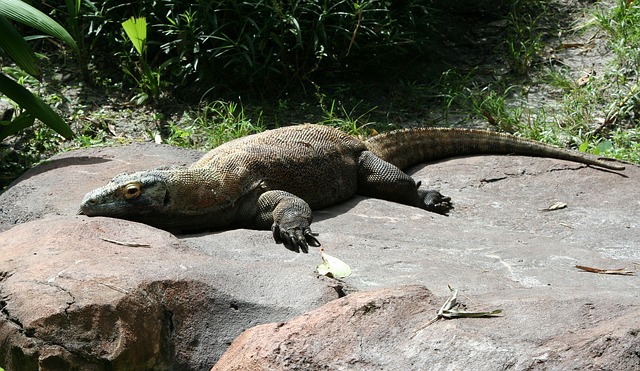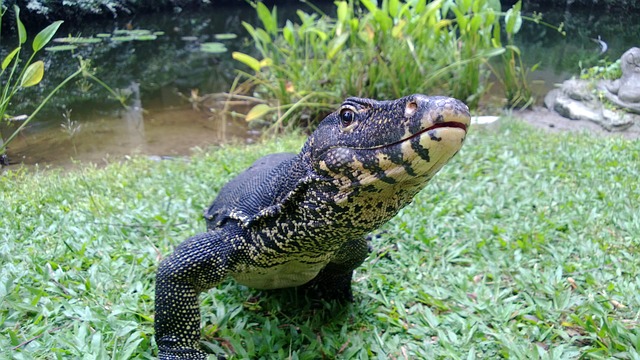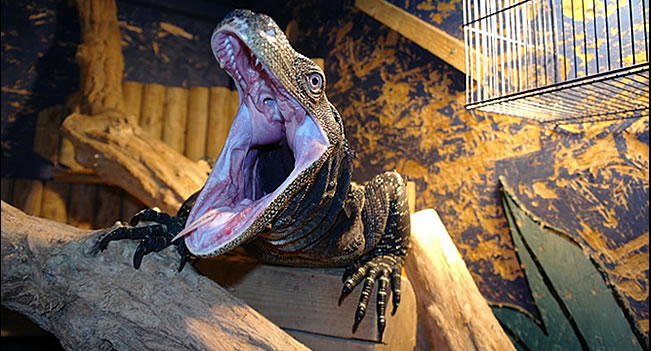Hello there! Alfred is super excited to see you, and look at how curious he is. Do you own a cat or dog? Because he seems to think you smell good. (stay back Alfred, be nice). Here we go, I’ve got a nice ball of cheese and bacon here. He’ll love it. Here Alfred, go get it!

While Alfred gets the ball, I can share this lovely disclaimer. Que elevator music…
I do the best I can with research, but I definitely don’t claim to be an expert. I try my best to keep up to date, and all my illustrations reflect this. (thank you internets, and to all hard-working paleo-nerds who are kind enough to make your papers open source!) 😀
That said, all the drawings in the A&S post series are quick doodles to illustrate a point, with not as much reference as I usually use, so there are plenty of inaccuracies for you to point out for me. 😉
Thank you disclaimer, you can go bother someone else now. 😛 Elevator music fades out…Oh and here comes Alfred! Looks like he wants more…
There we go, good boy Alfred!
Now Alfred here is an Allosaurus. He’s young, so only about 12 feet long so far, but he’ll grow to be a lot bigger. Not as big as his wild cousins though, a few of them could be as big as T-rex! (very few, gotta be old to get that big, and most dinos have a live fast, die young policy)
1. On Scaly Skin vs. Feathers
So you see Alfred here has these lovely bright yellow and forest green scales, the colors of youth. (They’ll mellow out a bit when he gets older, like monitor lizards do)
Also like a monitor lizard, you’ll notice that most of Alfred’s scales are quite small, with a rather pebbly texture. They get a bit larger and thicker on his back, which is good since adult Allosaurus tend to get into quite a lot of tussles with each other. But most of his scales have that nice cobblestone look to them.
Like this guy, remember him from last week’s post on feathers and scales?

Short answer as to why Alfred has scales…there’s a young Allosaurus with preserved scales somewhere on it’s body. (Unfortunately the report didn’t say where)
Long answer was so long I made a post out of it…To Feather or Not to Feather Your Dinosaur, That is the Question. (The komodo dragon above was laying around in that post. So was this gal, she’s a monitor lizard. 🙂 )

2. Getting Comfy…

Looks like Alfred’s all worn out from chasing after that giant, cheesy bacon-ball. He hasn’t quite grown into his adult silhouette yet. He’s still young enough to think he can chase after stuff, but he’s starting to get to an age where it’s getting hard to make those quick turns.
When he fills out his more barrel-chested adult figure, he’ll be spending quite a bit of his leisure hours (think energy-efficient) laying around. Since his body is a bit taller than it’s wide (more lanky cat than double-wide gator), it’s more relaxing to be lounging on his side.
Of course, that doesn’t mean he can’t do other things to relax, even things that may surprise us (ever seen a large horse roll? It’s hilarious 😀 ).



Oh, and here’s that horse… 😀 I can totally picture some “duckbill” dino doing this.
3. Where are His Teeth?!

I hear ya, I wondered the same thing when I looked up pictures of Komodo Dragons and monitor lizards. But wait, what does that have anything to do with it?
Pete will help us out here. I know Alfred looks a little awkward, but he’s actually quite comfy. Ah- I’ll let Pete tell you the rest…
“Thank you. Yes, Alfred is quite at ease here. I’m not heavy to him at all, and he weighs at least a good 300 pounds at this age. So he doesn’t mind a bit.
I’m tilting his head back very gently- show us your teeth there Alfred, that’s it, nice and easy.
See this is the biggest difference between a domestic Allosaurus like Alfred here and a wild one. Look how completely relaxed he is. He’s not fighting me at all, and even his eyes are closed, look at that. (Alfred makes a gurgly, kinda purring sound in his throat)
Anyhow, I’m holding onto his lips here so I keep my fingers out of his mouth. My fingers can look a bit like treats, so I’ll be sure to keep them right at the edge here, at the gums.
All this, the lips, the gums, the saliva- it all keeps his teeth nice and moist. Dinosaurs have a healthy coat of enamel on their teeth, same as your teeth, and the key to healthy teeth is to keep them moist. Even better if you can give your teeth a constant bath of saliva.
Yes, drool is essential to healthy teeth!
Now Alfred will lose his teeth and grow new ones, just like crocodiles and alligators do, but if you look closely at these teeth-they’re serrated. They’re like steak knives- not like the cone-like teeth of crocodiles.
Thank you Alfred, you’ve been quite patient. Here’s some jerky.
But crocodiles don’t need serrated teeth. They’re eating different things, they have a different habitat, and different diet, they’re eating in a completely different way. Alfred has teeth like a bone saw.
Ever cut a roast turkey with an electric knife? That’s what Alfred’s teeth are doing when he eats, so they need to stay sharp, and they need to be strong in his mouth. So the gums hold his teeth, and his lips keep them nice and moist so they stay strong and don’t get brittle.”
Thank you Pete, and Alfred. Just for comparison, here is a crocodile monitor lizard.

My first thought, “Where are the teeth?!” Then I noticed those sharp white triangular things inside the lip. Also interesting is that it looks like there are pockets for the bottom teeth to slip into. 🙂 Here’s the skull of the same animal…

They look quite different from the other picture don’t they? Almost, shall I say, dinosauresqe? Take a look at an Allosaurus skull. 😀

The one and only skull I could find that doesn’t have its teeth halfway falling out of their sockets (it happens when the dead critter decays). Jason has many more pictures of the Allosaurus mounts at the American Museum of Natural History, and I’d highly recommend you check out his blog post. You’ll also discover all my errors and where I need to fix Alfred. 😀
Quick Question: Help me find what I need to fix! If you wouldn’t mind checking out this blog post on Allosaurus, you’ll get to see some great pictures of excellent mounts, and you’ll see what I have to correct in my illustrations of Alfred.
I’d love to hear from you in the comments! I’ll be posting a comment on how many I find, and let’s see if we come up with the same ones or more. 😀
P.S.- You can always hop over the the A&S page to pick out who you want to see next! 🙂























 Ajax’s legs are like solid pillers, and all the finger bones are wrapped together to form a fleshy, padded, hoof-like structure. Only the “thumb” has a claw, which has some limited mobility depending on the species. Ajax can move his thumb claw up and down a little bit. 🙂
Ajax’s legs are like solid pillers, and all the finger bones are wrapped together to form a fleshy, padded, hoof-like structure. Only the “thumb” has a claw, which has some limited mobility depending on the species. Ajax can move his thumb claw up and down a little bit. 🙂